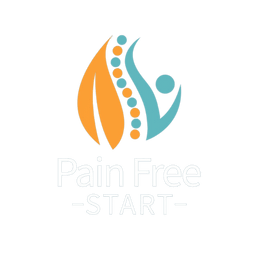Introduction
Tennis elbow can be a tricky problem to settle down. In this blog, I share with you my top tips to settle this problem down quickly without making it worse. I have seen many cases of tennis elbow since I began working as a Physiotherapist in 2001 I’m going to share my knowledge with you.
What is a Tennis Elbow?
First, let’s clarify what tennis elbow is. Tennis elbow, also known as lateral epicondylitis, is a type of repetitive strain injury that affects the tendons and muscles on the outside of the elbow. Despite its name, tennis elbow can affect anyone who performs repetitive gripping or twisting motions with their wrist and arm, not just tennis players. It’s particularly common in those with manual jobs joiners, builders, crafters, or those working at a computer.
Symptoms of Tennis Elbow
If you have tennis elbow, you may experience pain and tenderness on the outside of your elbow, especially when you use your forearm and wrist. You may also have difficulty gripping or lifting objects, or feel weakness in your arm. The good news is that tennis elbow can usually be treated effectively with physiotherapy and self-care.

6 Tips to Resolve Tennis Elbow
- Avoid aggravating activities: Avoid activities that aggravate your symptoms, these tend to be activities where you are gripping and twisting. It’s relatively easy to avoid activities that you do in your leisure time but what if it’s your job that’s aggravating it – not so easy? If this is the case chat with the people you work with, see if you can avoid certain jobs for a while or maybe reduce your hours or take some time off.
- Stretch and strengthen your forearm muscles: Stretches and loading exercises are essential to return the tendon to good health but these need to be managed very carefully. As too much will aggravate and make the problem worse. By following a staged exercise program with careful guidance you can improve tendon strength and health, which can help relieve your symptoms and prevent future injuries.
- Support: using a brace can help reduce the load through the tendon by limiting wrist movement as extending/lifting your wrist will aggravate the problem. It’s not something that I advise all the time but it can be really useful in the early stages to settle acute pain. Elbow straps may also provide some relief in the short term, find out more in this blog.
- Apply ice: Apply ice to your elbow for 15-20 minutes at a time, several times a day, to reduce pain and inflammation.
- Modify your activities: If your tennis elbow is caused by a specific activity, such as playing tennis or using a computer mouse, try to modify your technique or posture to reduce the strain on your elbow. A really easy thing you can do is to avoid over-gripping, we often grip things much harder than is needed so relax your grip a little and this will offload the area slightly. An ergonomic mouse can be helpful for those working at a computer.
- Seek professional help: If your symptoms persist or worsen despite self-care, or if you have other medical conditions that may affect your recovery, seek the help of a physiotherapist or doctor. Have a look at my Tennis Elbow Program which has everything you need to resolve this problem fast and prevent it from returning in the future.
How to avoid making things WORSE!
The real challenge with tennis elbow is in managing the load. This problem occurs because you have overloaded a tendon that is not very healthy. The key to treatment is to settle the acute pain before returning the tendon to good health. The way to do this is to gradually load the tendon. But too much load and you will increase your pain and cause another flare up, too little load and the tendon remains unhealthy and degenerate and may cause you problems again. It’s the same with stretches, stretching is useful in returning the tendon to good health and resolving the issue but if you stretch too early or too hard it can irritate and make the problem worse. Because of this, it can be a tricky problem to resolve, so don’t feel down if you have already tried and failed. This is where expert guidance is essential.
Conclusion
If you’re experiencing tennis elbow, remember, that early intervention and treatment can help prevent further damage and promote a faster recovery. In my tennis elbow program, I carefully guide you through the whole process. First, we work to settle the acute pain – fast. Before moving on to strengthening and improving the tendon health, in a way that won’t flare it back up. Have a look at the course, there are a couple of chapters that you can preview for FREE that will get you started, these can be found in the course contents. Get started today and be back enjoying your pain-free elbow in no time.
Take care, Helen
Helen Manders BSc (Hons) MCSP HCPC
Chartered Physiotherapist – Treating Tennis Elbows Since 2001



